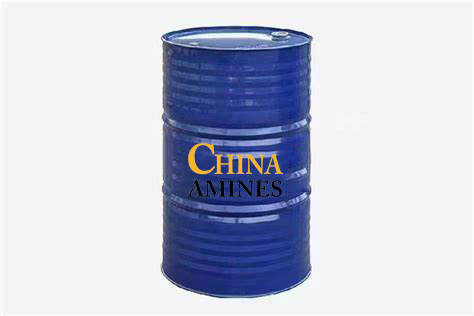zoom
Dipropylene glycol phenyl ether
-
Category:
Specialty Chemicals
Your Questions and Comments
Your sales and customer service desk partners within China Amines Co will continue to serve you. You can also contact us via our headquarter office-
Email:info@chinaamines.com
China Amines Co
Product Profile
Dipropylene Glycol Phenyl Ether
CAS No.: 61788-71-2
Synonyms / IUPAC Name: Di(propylene glycol) phenyl ether; Phenoxy dipropylene glycol ether
Molecular Formula: C₁₂H₁₈O₃
Molecular Weight: ~210 g/mol
Appearance: Colourless to pale yellow clear liquid
Physicochemical Properties (Typical)
- Boiling Point: ≈ 280 °C
- Density: ~1.05 g/cm³ at 20 °C
- Refractive Index: ~1.579 (n²⁰ᴰ)
- Solubility in Water: Very low; predominantly hydrophobic
- Vapour Pressure: Low (slow-evaporating glycol ether)
- Other Notes: Low volatility and strong solvency for high-performance applications
Purity & Quality Standards
- Typical Purity: ≥ 98% (by GC or appropriate assay)
- Appearance: Clear liquid, free of visible particulates or haze
- Specification Indicators: Assay, moisture content, acid value, density and refractive index controlled to specification
- Storage Recommendation: Store sealed in a cool (<30 °C), dry and well-ventilated area; protect from strong oxidisers and excessive heat
Applications / Uses
- Slow-evaporating solvent in coatings, inks, adhesives and resin systems
- High-solvency component for cleaning and surface-treatment formulations
- Coupling solvent and intermediate in specialty chemical processes
- Suitable for formulations requiring low volatility, strong wetting and good leveling performance
Safety & Handling
- Flammability: Combustible liquid; vapours may form flammable mixtures under certain conditions.
- Health Hazards:
- Inhalation: May cause respiratory irritation or dizziness at high vapour concentrations.
- Skin Contact: Prolonged or repeated contact may cause mild irritation.
- Eye Contact: May cause eye irritation.
- Precautions:
- Use only in well-ventilated areas or with local exhaust ventilation.
- Wear suitable protective gloves, eye/face protection and protective clothing.
- Avoid ignition sources, heat, sparks and static; ground/bond containers during transfer.
- Keep away from strong oxidising agents and extreme heat.
- Reactivity / Incompatibilities: Avoid strong oxidisers, strong acids and strong bases; decomposition may occur at elevated temperatures.
- First Aid (general guidance):
- Inhalation: Move to fresh air; seek medical attention if symptoms persist.
- Skin: Remove contaminated clothing and wash with soap and water.
- Eyes: Rinse cautiously with water for several minutes; seek medical help if irritation continues.
- Ingestion: Do not induce vomiting; obtain medical attention immediately.
Packaging & Storage
- Packaging: Supplied in sealed, solvent-compatible industrial containers (e.g., steel drums, IBCs) as per customer requirement.
- Storage Conditions: Store in a cool (<30 °C), dry, well-ventilated area, away from direct sunlight, heat and incompatible materials; keep containers tightly closed when not in use.
- Shelf Life: Stable under recommended storage conditions; inspect container integrity and product appearance before extended use.
- Transport: Follow applicable local and international regulations for combustible liquids and solvent shipments.


